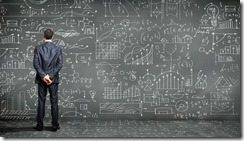Data science is a combination of the science of statistics and computer science. Over the last decade, this field has emerged in response to the vast amount of data that is collected everyday. It can be hard to grasp just how much data is collected daily — IBM estimates that we create 2.5 quintillion bytes of data and that 90 percent of all data has been created in the last two years. Making sense of data has been the province of librarians, statisticians, scientists and computer scientists for years, and data scientists are the new heirs. Here’s a look at the rise of data science and what it means for the future.
Early Data Science
In 1962, John W. Tukey questioned his role as a statistician in “The Future of Data Analysis” and contemplated a future of computer data that would need analysis. Over his career, he argued that data should be used to suggest hypotheses instead of existing solely as a product of experimentation. By the end of the 1980s, the first Knowledge Discover in Databases workshop was organized and hosted in Detroit. Attended by 69 researchers, the one-day workshop focused on systems, applications, data-driven discovery and knowledge-based approaches to the analysis of data.
In 1994, data science made the front page when BusinessWeek published a cover story entitled “Database Marketing.” The article predicted the sheer quantity of data being too much for companies to sort through on their own and even predicted the idea that companies would use the data to tailor advertising directly to individual consumers.
The Data Scientists
The era of Big Data has led to the need for professional analysis and visualization of this data. In the past, data was created by the process of scientific experimentation. Experiments were performed, results were recorded and that data was analyzed. Today, data is collected by a variety of tools, applications and programs, which is then analyzed by far different methods than the data of the past. Today’s data scientists essentially scour through thousands of gigs of data to find the small bit of usable information, much like panning for gold.
Every industry has collected enormous amounts of data over the last few decades, from manufacturing and finance to healthcare and telecommunications. This has led to the emerging need for professionals to makes sense of this data, and has created a whole new field of analytics. Today, data science is applied to countless aspects of daily life. For example, services like Aspect provide real-time analytics for cloud-based call centers to monitor call quality as well as improve service-to-sales opportunities.
Data Crime
As the world of data scientists grows, so do the risks. Data breaches committed by cybercriminals have been on the rise, leading to an average cost of $415,000 a year, according to CIO. As more and more data is collected, companies are struggling to keep up with the criminals that want to use it for their own purposes. If the companies compiling data want to survive this dramatic change in the information age, they will need to invest in security or be faced with the lawsuits and liabilities that come along with their failure to protect this precious commodity.


